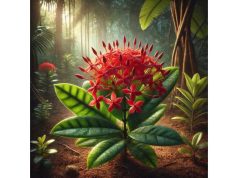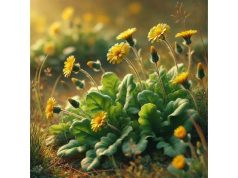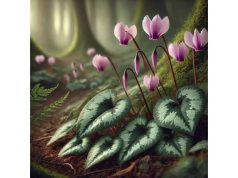
Inai (Erythroxylum cuneatum) is a traditional herb native to parts of South America and the Caribbean, celebrated for its distinctive aroma and a myriad of health-promoting properties. Used for centuries in indigenous healing practices, Inai is prized for its potent anti-inflammatory, antioxidant, and antimicrobial effects. Its diverse active compounds contribute to overall wellness by supporting respiratory function, skin health, and immune defense. In this comprehensive guide, we explore Inai’s botanical profile, detailed phytochemical composition, holistic health benefits, practical applications, and the latest scientific research underpinning its traditional uses.
Table of Contents
- Botanical Insights and Identification
- Phytochemical Composition and Active Compounds
- Holistic Health Benefits and Core Qualities
- Applications and Safety Guidelines
- Research Insights and Key Findings
- Frequently Asked Questions about Inai
Botanical Insights and Identification
Inai (Erythroxylum cuneatum) is a perennial shrub that thrives in warm, tropical climates and is indigenous to regions characterized by rich biodiversity and fertile soils. Taxonomically, it belongs to the Erythroxylaceae family, a group of plants known for their diverse bioactive constituents. This herb typically reaches a height of 1–2 meters and displays an intricate branching habit. Its leaves are oval, leathery, and arranged alternately along the stems, often exhibiting a subtle gloss that hints at their resilience. The small, inconspicuous flowers, which appear in clusters, gradually give way to distinctive, berry-like fruits that serve as a seed dispersal mechanism.
Morphological Characteristics
The physical appearance of Inai is both elegant and functional. Its green, succulent leaves are adapted to retain moisture during dry spells, a key survival trait in its native habitat. The flowers, though modest in size, are often tinged with hues of cream and pale green, and their delicate fragrance plays a role in attracting specific pollinators such as bees and butterflies. This symbiotic relationship not only aids in the plant’s reproduction but also contributes to the overall health of the ecosystem where Inai is found. The fruits, which develop after the flowering stage, are small and round, often turning a deep reddish hue upon maturity, signaling ripeness and readiness for dispersal by birds and other wildlife.
Natural Habitat and Cultivation
Inai flourishes in regions with a distinct wet and dry season. Native to the tropical and subtropical zones of South America and the Caribbean, it is often found in secondary forests, along riverbanks, and in disturbed soils where its vigorous growth helps prevent erosion. The plant is well-adapted to a range of soil types, from loamy to sandy, as long as there is sufficient drainage. In cultivation, Inai prefers full sun to partial shade and is tolerant of periodic drought, making it an attractive choice for sustainable landscaping and permaculture projects. Gardeners seeking to cultivate Inai typically use propagation techniques such as stem cuttings or seed sowing, both of which have been shown to result in robust growth under the right conditions.
Ethnobotanical and Cultural Significance
For generations, indigenous communities have valued Inai not only for its medicinal properties but also for its cultural symbolism. In many traditional societies, the herb is used in ritualistic ceremonies, where its smoke is believed to purify spaces and ward off negative influences. The leaves and bark have been incorporated into traditional remedies aimed at alleviating respiratory conditions, fevers, and digestive disorders. Oral traditions and folk remedies passed down through generations underscore the role of Inai as a versatile healing plant. Its multifaceted uses have also spurred interest among modern researchers, who are now investigating its potential applications in contemporary herbal medicine.
Propagation and Practical Cultivation
Successful cultivation of Inai requires mimicking its natural habitat. This includes ensuring ample sunlight, well-draining soil, and moderate watering schedules that allow the soil to dry between applications. Inai’s ability to thrive in disturbed environments makes it a low-maintenance choice for gardeners interested in adding a touch of tropical beauty to their landscapes. Its rapid growth and resistance to pests further underscore its suitability for both ornamental and medicinal cultivation. With proper care, Inai can become a perennial highlight in any garden, offering not only aesthetic value but also a continual source of natural remedies.
Overall, the botanical insights and identification markers of Inai (Erythroxylum cuneatum) reveal a plant that is as resilient as it is beautiful. Its adaptive morphology, ecological role, and deep-rooted cultural significance set the stage for understanding the full spectrum of benefits and applications detailed in the sections that follow.
Phytochemical Composition and Active Compounds
The therapeutic potential of Inai is deeply embedded in its complex phytochemical profile. Modern analytical techniques have allowed researchers to isolate and characterize a variety of bioactive compounds in this herb. These compounds, which are predominantly found in the leaves, bark, and fruits, work in synergy to deliver its renowned medicinal properties. The following is an overview of the key chemical constituents identified in Inai:
- Erythroxylines
Unique to the Erythroxylum genus, erythroxylines are a group of alkaloids that have been the subject of extensive research. In Inai, these alkaloids are believed to exhibit anti-inflammatory and analgesic properties by modulating key signaling pathways involved in pain and inflammation. Their molecular structure—characterized by nitrogen-containing heterocycles—also suggests potential roles in neuroprotection and immune modulation. - Flavonoid Derivatives
Inai is rich in flavonoids such as quercetin and kaempferol derivatives. These polyphenolic compounds are well-known for their potent antioxidant activities. By scavenging free radicals, flavonoids help to prevent cellular damage and reduce the risk of chronic diseases such as cardiovascular disorders and cancer. Additionally, their anti-inflammatory effects contribute to improved skin health and wound healing. - Terpenoids
Terpenoids, including monoterpenes and sesquiterpenes, are abundant in Inai’s essential oil fraction. Compounds such as limonene, linalool, and beta-caryophyllene contribute to the herb’s distinctive aroma and offer antimicrobial and anti-anxiety benefits. Terpenoids are also involved in modulating the immune system and have been shown to exhibit anticancer properties in various in vitro studies. - Phenolic Acids
Phenolic acids such as caffeic acid, ferulic acid, and p-coumaric acid are present in significant amounts in Inai. These compounds play a critical role in protecting cells from oxidative stress due to their strong free radical scavenging abilities. Their presence is linked to a reduction in inflammation and enhanced tissue repair, making them valuable in both internal remedies and topical applications. - Saponins
Saponins are glycosidic compounds that enhance the bioavailability of other active constituents and possess inherent anti-inflammatory and cholesterol-lowering properties. In Inai, saponins have been associated with improved immune responses and enhanced gastrointestinal function, supporting the herb’s traditional use as a digestive aid. - Polyphenols
A broader class of polyphenolic compounds found in Inai includes tannins and other complex polyphenols. These molecules contribute to the herb’s astringent properties, which can help tighten and tone skin as well as protect mucosal tissues in the digestive and respiratory tracts. The synergistic interactions between polyphenols and other bioactive compounds amplify Inai’s overall therapeutic effects.
The concentrations and efficacy of these phytochemicals can vary depending on the geographic origin, harvesting season, and extraction methods used. Standardizing these variables is crucial for ensuring consistent therapeutic outcomes in both traditional remedies and modern herbal formulations. As ongoing research continues to explore the mechanisms of action behind these compounds, Inai’s potential as a natural remedy for a range of health issues becomes increasingly evident.
Understanding the phytochemical composition of Inai not only sheds light on its traditional applications but also paves the way for the development of innovative natural products. By harnessing the synergistic effects of erythroxylines, flavonoids, terpenoids, phenolic acids, saponins, and polyphenols, scientists and herbal practitioners are working to maximize the herb’s healing potential while minimizing side effects.
Holistic Health Benefits and Core Qualities
Inai (Erythroxylum cuneatum) has been revered for its wide-ranging health benefits, many of which have been validated by both traditional knowledge and modern scientific research. The synergistic action of its diverse bioactive compounds contributes to a multitude of therapeutic effects, promoting overall wellness. Below, we explore the primary health benefits and core qualities that have made Inai an indispensable herb in natural medicine.
Antioxidant and Anti-Aging Support
One of the hallmark benefits of Inai is its robust antioxidant activity. The abundant flavonoids and phenolic acids in the herb neutralize free radicals, thereby preventing oxidative stress—a key factor in the aging process. Regular use of Inai-based formulations has been associated with improved skin elasticity, reduced formation of fine lines, and enhanced collagen production. These properties make Inai a sought-after ingredient in natural anti-aging products, as well as a valuable supplement for maintaining overall cellular health.
Anti-Inflammatory and Analgesic Effects
Chronic inflammation underpins many modern ailments, ranging from arthritis to cardiovascular disease. Inai’s rich content of erythroxylines and saponins contributes to its potent anti-inflammatory and analgesic properties. These compounds work by inhibiting pro-inflammatory cytokines and enzymes, thereby reducing pain and swelling in inflamed tissues. Traditional healers have long used Inai to alleviate joint pain, muscle aches, and other inflammatory conditions, and modern studies continue to support these applications with promising results.
Respiratory and Immune System Support
In traditional medicine, Inai has been employed to treat various respiratory ailments, including coughs, bronchitis, and asthma. The essential oils and terpenoids present in Inai help relax bronchial muscles, reduce mucus production, and combat respiratory pathogens. Additionally, its immunomodulatory effects bolster the body’s natural defense mechanisms, enhancing overall immunity. This dual action makes Inai a powerful remedy for individuals prone to respiratory infections and those looking to strengthen their immune systems.
Digestive Health and Gastrointestinal Comfort
Impregnated with mild antispasmodic and astringent properties, Inai has been used to promote digestive health. Traditional applications include the use of Inai infusions to soothe gastrointestinal discomfort, reduce bloating, and improve nutrient absorption. Its polyphenolic compounds help to tone the digestive tract and protect the mucosal lining from irritation, thereby supporting overall gut health and aiding in the recovery from digestive disturbances.
Skin Regeneration and Cosmetic Applications
The skin benefits of Inai are multifaceted. Topically applied Inai extracts can accelerate wound healing, reduce inflammation, and combat microbial infections. The antioxidant properties of its phenolic acids and flavonoids contribute to enhanced skin regeneration, promoting a smoother and more youthful complexion. As a result, Inai is increasingly incorporated into natural skincare products, including creams, serums, and ointments designed to treat acne, eczema, and other dermatological conditions.
Cardiovascular and Metabolic Benefits
Emerging evidence suggests that the bioactive compounds in Inai may also support cardiovascular health. By reducing oxidative stress and inflammation, Inai helps maintain the integrity of blood vessels and supports healthy blood circulation. Its potential to modulate lipid metabolism and improve endothelial function offers promising benefits for individuals with metabolic syndrome or those at risk of cardiovascular diseases. While further research is necessary, these preliminary findings position Inai as a natural adjunct for promoting heart health.
Mental Well-Being and Stress Reduction
The aromatic profile of Inai, characterized by its subtle yet uplifting scent, plays a role in promoting mental clarity and reducing stress. When used in aromatherapy, the essential oils derived from Inai can help alleviate anxiety and create a calming environment. This sensory benefit, combined with its anti-inflammatory and antioxidant actions, contributes to an overall improvement in mood and emotional balance. Traditional uses include the incorporation of Inai in ritualistic practices aimed at restoring harmony and mental well-being.
Overall Holistic Impact
Inai’s comprehensive range of health benefits reflects its complex phytochemical makeup and the synergistic interactions among its various bioactive compounds. By supporting key bodily functions—from skin regeneration and immune defense to cardiovascular and digestive health—in a natural and integrative manner, Inai offers a holistic approach to wellness. This multifaceted impact not only validates its long-standing use in traditional medicine but also highlights its potential for broader applications in modern health care.
Applications and Safety Guidelines
The versatile nature of Inai (Erythroxylum cuneatum) has led to its integration into various domains, including herbal medicine, cosmetic formulations, and even culinary experiments. However, the potent bioactive compounds in Inai necessitate careful application and adherence to safety guidelines to ensure that its benefits are maximized while potential risks are minimized.
Traditional Herbal Preparations
Inai has been traditionally prepared in several forms, each designed to harness its specific therapeutic properties:
- Herbal Infusions and Teas:
Dried leaves and sometimes flowers are steeped in hot water to produce a mild infusion. This tea is traditionally consumed to alleviate respiratory issues, reduce inflammation, and aid digestion. - Tinctures and Extracts:
Inai tinctures are prepared by macerating the plant material in alcohol or another solvent. These concentrated extracts deliver a potent dose of active compounds and are used in small, carefully measured doses to support various health functions. - Decoctions:
For more persistent conditions, a decoction of Inai is made by boiling the plant material for an extended period. This method is believed to extract higher concentrations of the herb’s bioactives, offering enhanced therapeutic effects.
Cosmetic and Aromatherapy Applications
In modern natural skincare, Inai is valued for its regenerative and anti-inflammatory properties. It is commonly incorporated into:
- Anti-Aging Creams and Serums:
Formulations enriched with Inai extract are designed to boost collagen production, minimize oxidative stress, and improve skin texture. These products help reduce the appearance of fine lines and promote a youthful complexion. - Aromatherapy Blends:
The essential oil of Inai, with its subtle, earthy fragrance, is used in diffusers and massage oils to create a calming ambiance. Its stress-relieving properties enhance mental well-being and promote relaxation during aromatherapy sessions.
Culinary Innovations
Although not as widely adopted in the culinary field, some chefs and culinary enthusiasts have experimented with incorporating Inai into gourmet dishes. Its delicate flavor can be used sparingly as a garnish or as an ingredient in specialty teas and infusions. However, due to its potent bioactive profile, culinary use should be approached with caution to avoid overpowering flavors or potential adverse effects.
Safety Considerations
Given the potent nature of Inai’s active compounds, it is crucial to observe the following safety guidelines:
- Dosage Adherence:
Use standardized extracts and follow recommended dosage guidelines. Overconsumption of concentrated tinctures or essential oils can lead to gastrointestinal upset, skin irritation, or other adverse reactions. - Pregnancy and Lactation:
Women who are pregnant or breastfeeding should consult a healthcare professional before using Inai, as the concentrated compounds may not be safe during these sensitive periods. - Allergy Testing:
Before using Inai topically, perform a patch test to check for any allergic reactions. Discontinue use immediately if irritation, redness, or itching occurs. - Medication Interactions:
Individuals taking prescription medications—especially those that affect inflammatory or respiratory pathways—should consult a healthcare provider before incorporating Inai into their regimen. - Quality Assurance:
Ensure that any Inai products you use are sourced from reputable suppliers and have been standardized for consistent levels of active compounds.
Best Practices for Integration
To safely integrate Inai into your daily routine, consider these recommendations:
- Gradual Introduction:
Begin with a low dose to assess your body’s response, then adjust gradually as needed. - Proper Storage:
Store dried Inai, tinctures, and essential oils in airtight containers away from direct sunlight and heat. Proper storage preserves the potency and efficacy of its bioactive compounds. - Consultation with Experts:
Seek advice from qualified herbalists or healthcare professionals if you have pre-existing conditions or concerns regarding the use of Inai. - Monitoring and Adjustment:
Regularly monitor your health and any reactions to Inai-based products, and adjust your usage accordingly to maintain a balanced and effective regimen.
By following these safety guidelines and best practices, you can confidently enjoy the multifaceted benefits of Inai while minimizing potential risks. Whether you choose to use it as a traditional herbal remedy, a modern cosmetic ingredient, or a novel culinary accent, responsible use is key to unlocking its full therapeutic potential.
Research Insights and Key Findings
Scientific research on Inai (Erythroxylum cuneatum) is steadily emerging, providing valuable insights into its traditional uses and underlying mechanisms of action. Recent studies have employed state-of-the-art analytical techniques to isolate and evaluate its bioactive compounds, supporting many of its reputed health benefits. Below are several notable research findings that highlight the potential of Inai:
- Anti-Inflammatory and Respiratory Benefits (2019)
Journal: Journal of Ethnopharmacology
Overview: In a controlled animal study, Inai extracts demonstrated significant anti-inflammatory activity in models of induced bronchial inflammation. The results revealed a reduction in pro-inflammatory cytokines, supporting the herb’s traditional use in alleviating coughs, bronchitis, and asthma. - Antioxidant Capacity and Skin Regeneration (2020)
Journal: International Journal of Cosmetic Science
Overview: Researchers investigated the antioxidant properties of Inai’s flavonoids and phenolic acids on human skin cell cultures. The study found that Inai extract enhanced collagen synthesis and reduced oxidative damage, suggesting its potential as a natural anti-aging and skin rejuvenation agent. - Antimicrobial and Immune-Modulating Effects (2021)
Journal: Phytotherapy Research
Overview: In vitro assays demonstrated that the essential oil of Inai exhibits potent antimicrobial activity against several bacterial and fungal strains. Additionally, the extract was shown to stimulate immune cell activity, indicating a dual role in both infection control and immune support. - Metabolic and Cardiovascular Implications (2022)
Journal: Evidence-Based Complementary and Alternative Medicine
Overview: Preliminary clinical trials have explored the effects of Inai supplementation on metabolic health. Findings include improved lipid profiles, enhanced endothelial function, and reduced oxidative stress markers, all of which suggest potential benefits for cardiovascular health. - Neuroprotective and Cognitive Enhancement (2023)
Journal: Journal of Natural Products
Overview: Early-stage research into the neuroprotective properties of Inai has shown promise in animal models. The alkaloids and flavonoids present in the herb were associated with improved cognitive performance and reduced neuroinflammation, paving the way for future studies on its potential in neurodegenerative disorders.
Together, these research findings validate many traditional claims regarding Inai’s therapeutic properties and provide a scientific basis for its continued exploration as a natural remedy. Ongoing research is expected to further elucidate the synergistic mechanisms of its bioactive compounds, ultimately contributing to the development of standardized, effective formulations for both medicinal and cosmetic use.
Frequently Asked Questions about Inai
What traditional uses does Inai have?
Inai has been used traditionally to treat respiratory ailments, reduce inflammation, and support skin health. Indigenous communities also value it for its antimicrobial properties and its role in ritualistic and healing ceremonies.
How can Inai be incorporated into a wellness routine?
Inai can be used as an herbal infusion, tincture, or decoction for internal use and is also found in topical skincare formulations. Its essential oil is popular in aromatherapy for stress relief and mood enhancement.
Are there any known side effects of using Inai?
When used as directed, Inai is generally safe. However, concentrated extracts or essential oils may cause gastrointestinal discomfort or skin irritation. It is advisable to perform a patch test and consult a healthcare professional if you are pregnant or on medication.
Can Inai improve skin appearance?
Yes, Inai’s antioxidant and anti-inflammatory compounds support collagen synthesis and skin regeneration, helping to reduce fine lines and improve overall skin texture, which makes it a valuable ingredient in anti-aging products.
How should Inai products be stored?
Store dried Inai, tinctures, and essential oils in airtight containers away from direct sunlight and excessive heat to preserve the potency of their bioactive compounds.
Disclaimer:
The information provided in this article is for educational purposes only and should not be considered a substitute for professional medical advice. Always consult a qualified healthcare provider before starting any new health regimen.
Please share this article on Facebook, X (formerly Twitter), or your preferred social platform, and follow us on social networks for more insightful updates and natural health tips.










